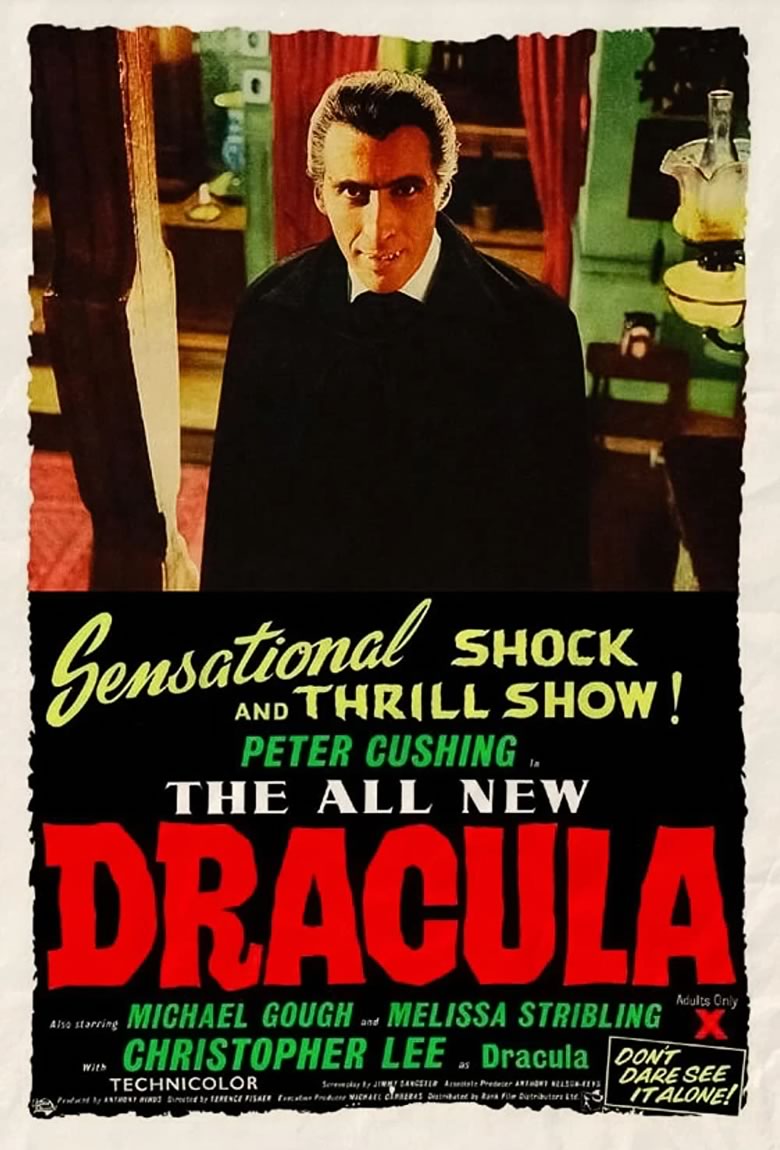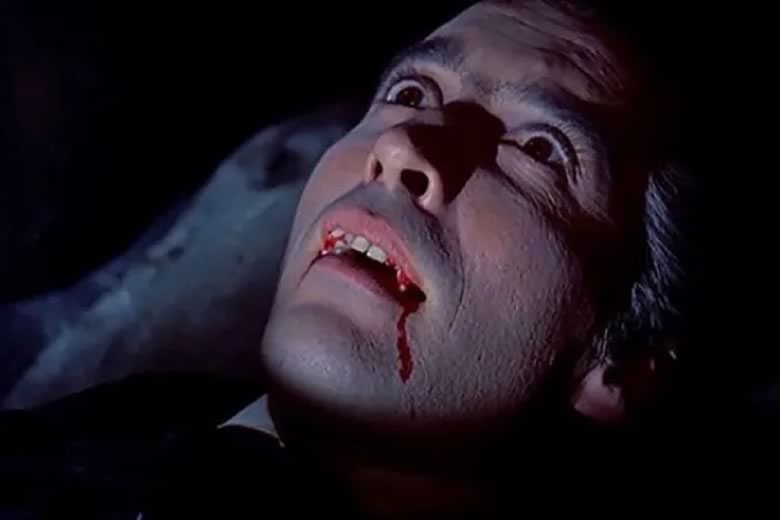Unveiling the Darkness: A Tribute to The Horror of Dracula
August 21, 2024
In 1958, Hammer Film Productions unleashed a cinematic force that would redefine the horror genre and leave an indelible mark on popular culture. The Horror of Dracula—known simply as Dracula in the UK—was more than just another vampire movie; it was a bold, Technicolor reimagining of Bram Stoker's classic tale, brought to life with a fresh intensity that thrilled and terrified audiences around the world. As we revisit this groundbreaking film, we celebrate its enduring legacy and the lasting impact it has had on the portrayal of Dracula in cinema.
Before The Horror of Dracula, the image of the vampire was largely shaped by Bela Lugosi's 1931 portrayal, which depicted Count Dracula as a suave, mysterious figure cloaked in shadow. Hammer's version, however, took the character in a different direction—one that would become iconic in its own right. Christopher Lee's Dracula was a creature of both aristocratic elegance and raw, predatory menace. With his towering presence, piercing gaze, and deep voice, Lee's Dracula was a vampire for the modern age: terrifying, magnetic, and unforgettable.
Lee's interpretation of Dracula was a departure from the subtlety of previous versions. His Dracula was a force of nature, driven by an insatiable hunger and a primal need to dominate. This was a vampire who didn't just lurk in the shadows—he attacked with brutal, relentless ferocity. The film's use of color heightened this effect, with Dracula's blood-red eyes and the vibrant crimson of his victims' blood making the horror feel more immediate and visceral.

Every great villain needs an equally compelling hero, and in The Horror of Dracula, that hero was Peter Cushing's Professor Van Helsing. Cushing brought a level of intensity and determination to the role that made Van Helsing more than just a scholar of the occult; he was a warrior, a man willing to face the ultimate evil head-on. Cushing's Van Helsing was not only intelligent and resourceful, but also deeply moral, embodying the strength of character needed to confront such a formidable foe.
The chemistry between Lee and Cushing was electric, with their on-screen battles becoming some of the most memorable moments in horror cinema. Their dynamic—Lee's Dracula as the embodiment of darkness and Cushing's Van Helsing as the beacon of light—became a defining feature of Hammer Horror, and it's a pairing that would continue to thrill audiences in many films to come.

One of the most striking aspects of The Horror of Dracula was its bold use of color. Hammer Films made a conscious decision to break away from the monochromatic horror films of the past by embracing Technicolor, and the result was a visual feast that added a new dimension to the genre. The rich, saturated colors brought the gothic settings to life, making the eerie castles, misty graveyards, and dark forests all the more atmospheric.
The film's production design was equally impressive, with elaborate sets and period costumes that immersed viewers in the world of 19th-century Europe. The attention to detail in the set pieces and the use of dramatic lighting created a hauntingly beautiful backdrop for the unfolding horror. Combined with James Bernard's powerful and evocative score, the film's atmosphere was one of high tension and dread, perfectly capturing the essence of gothic horror.

Legacy and Influence
The Horror of Dracula was a commercial success and quickly became a cornerstone of Hammer's horror repertoire, leading to a series of sequels that continued the story of Count Dracula and Van Helsing. But its impact didn't stop there. The film's portrayal of Dracula, with Christopher Lee's imposing presence and the striking use of color and violence, influenced countless vampire films and TV shows that followed. From Salem's Lot to Buffy the Vampire Slayer, the legacy of Hammer's Dracula can be seen in nearly every modern depiction of vampires.
Moreover, the film helped solidify Hammer Film Productions as the leading studio for gothic horror during the late 1950s and 1960s. Hammer's distinctive style—a blend of gothic atmosphere, vivid color, and a balance of horror and sensuality—became synonymous with a new era of horror cinema.

The Horror of Dracula is more than just a milestone in horror cinema; it's a timeless classic that continues to captivate and terrify audiences over six decades after its release. Whether you're a longtime fan of gothic horror or new to the genre, this film is a must-watch—a thrilling exploration of good versus evil, brought to life by two of the greatest actors in horror history.
As we revisit The Horror of Dracula, we not only celebrate the film itself but also the enduring power of classic horror to inspire, entertain, and—most importantly—. The shadow of Dracula looms large, and thanks to Hammer Films, it's a shadow that will never fade.

